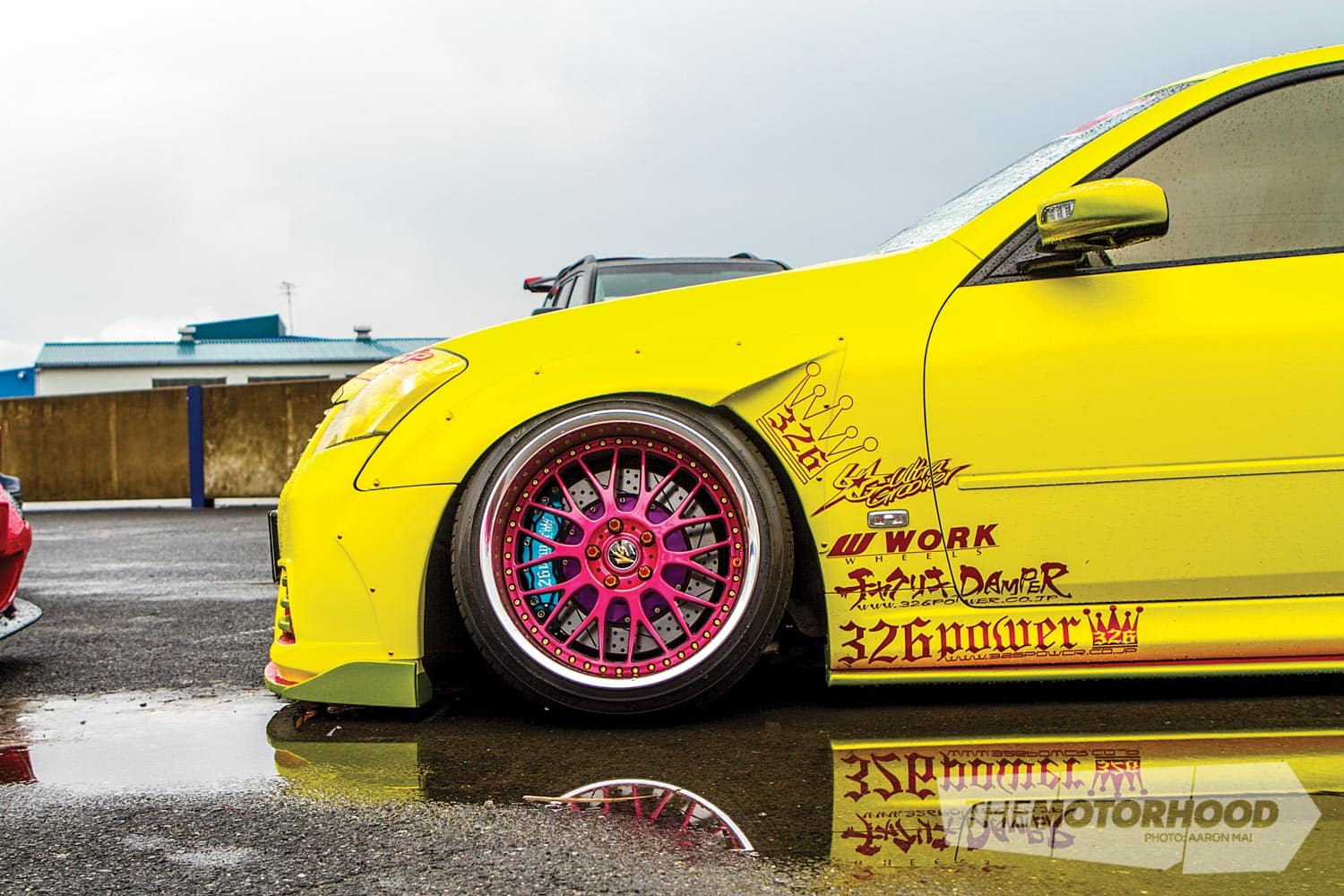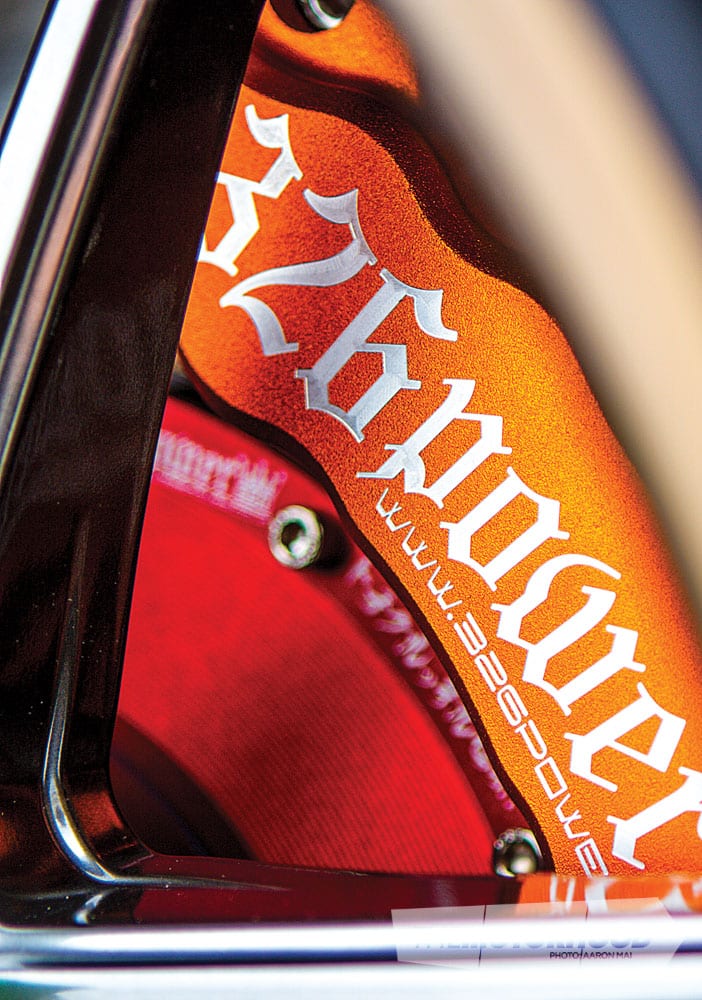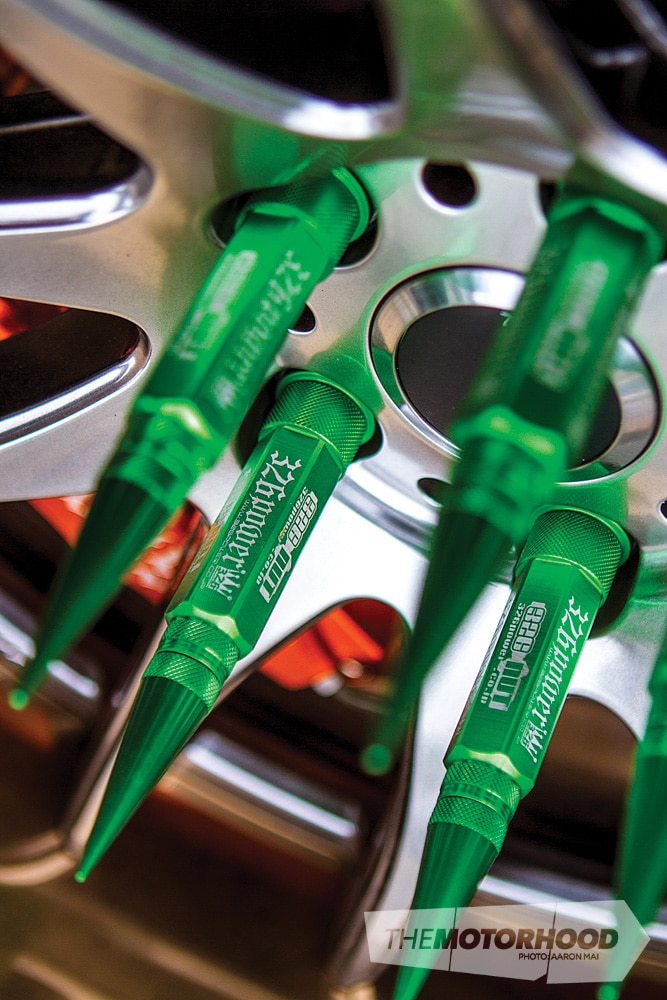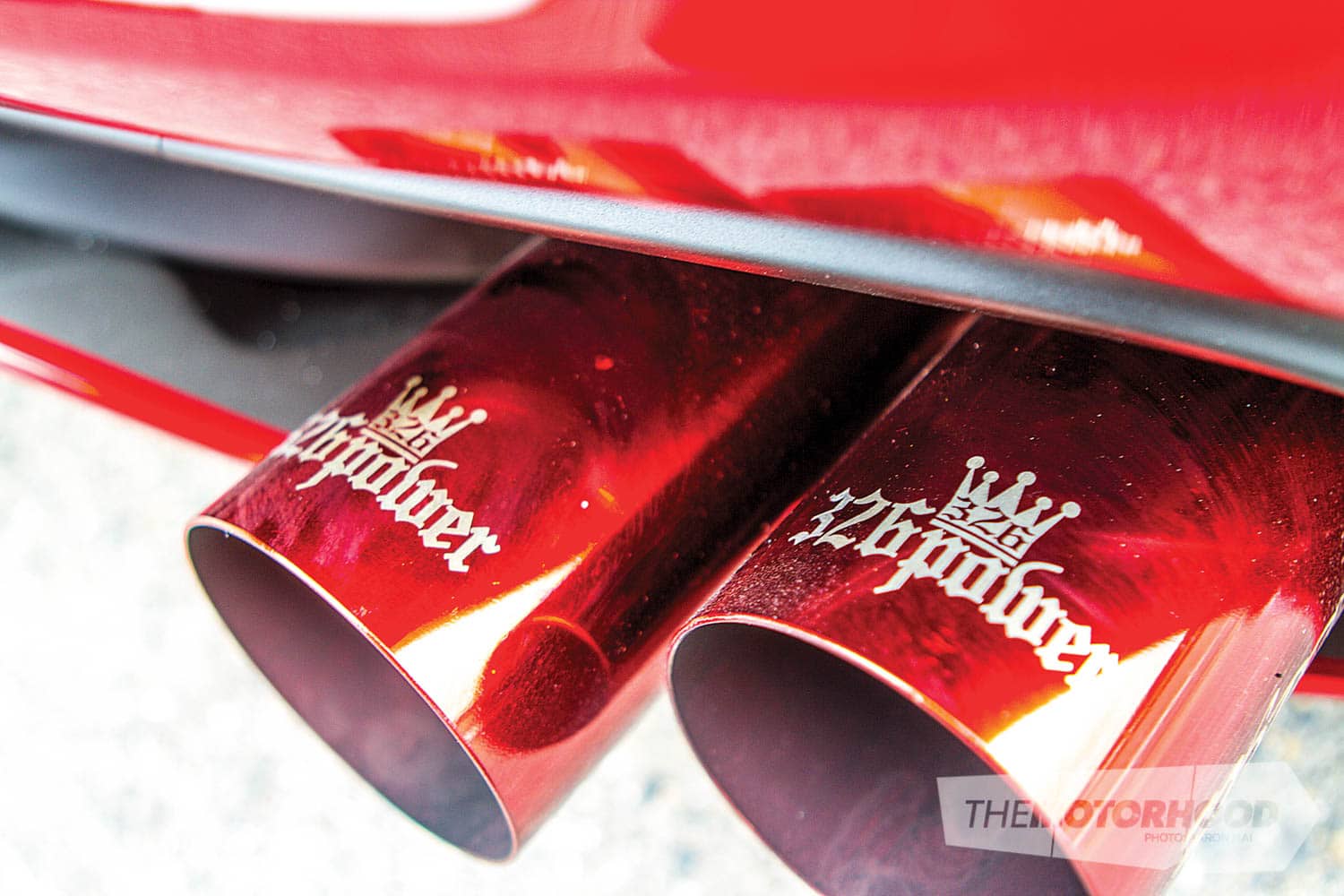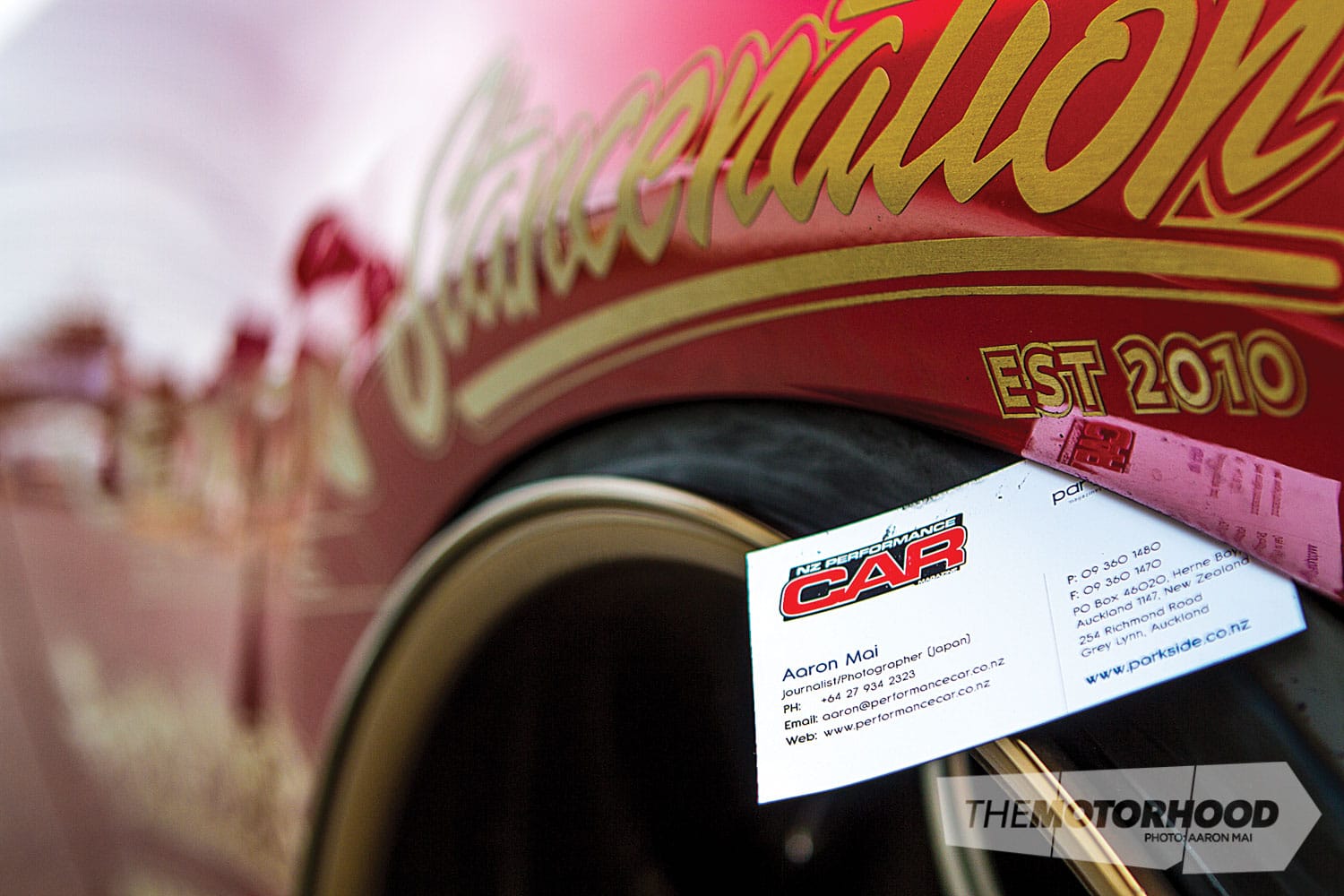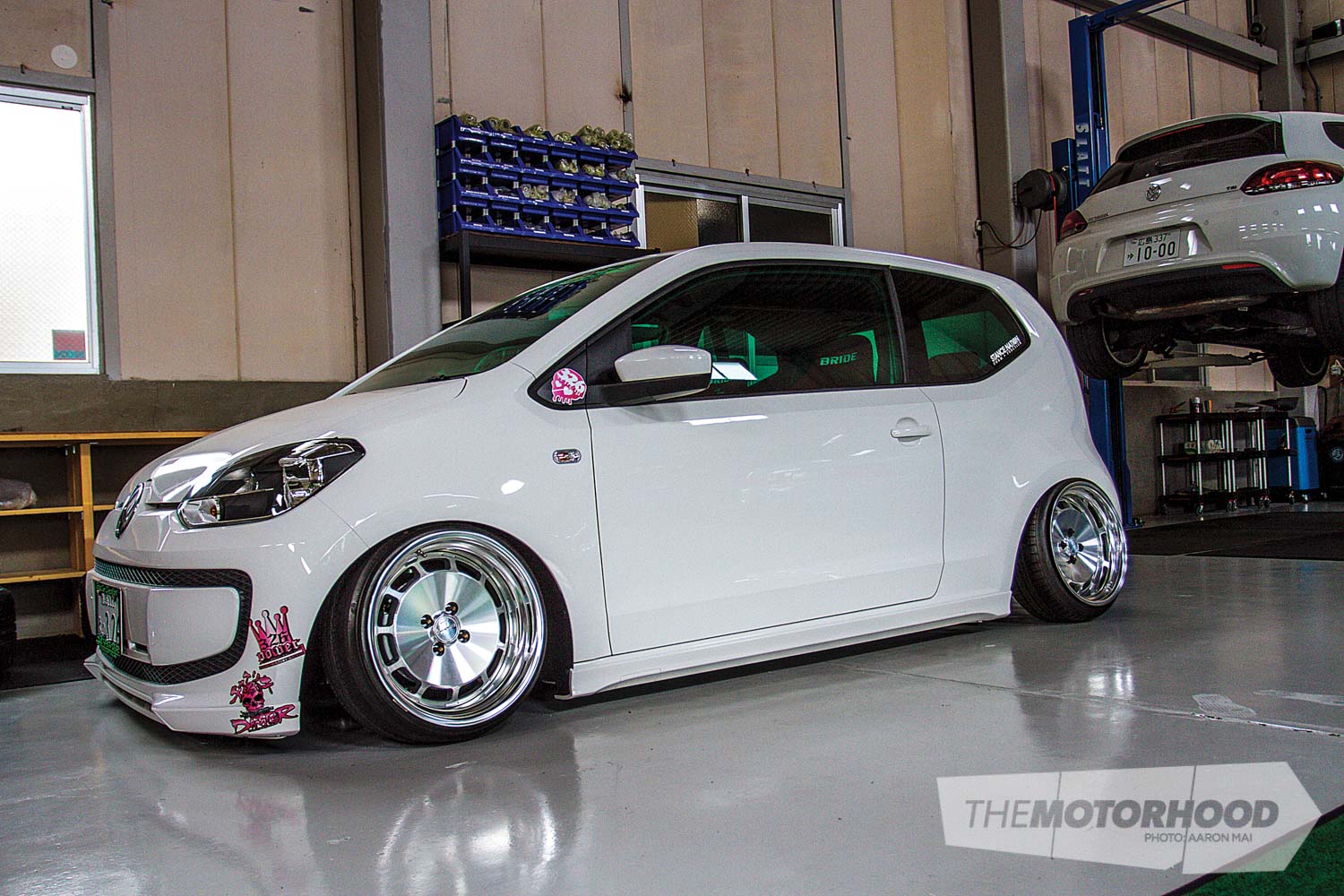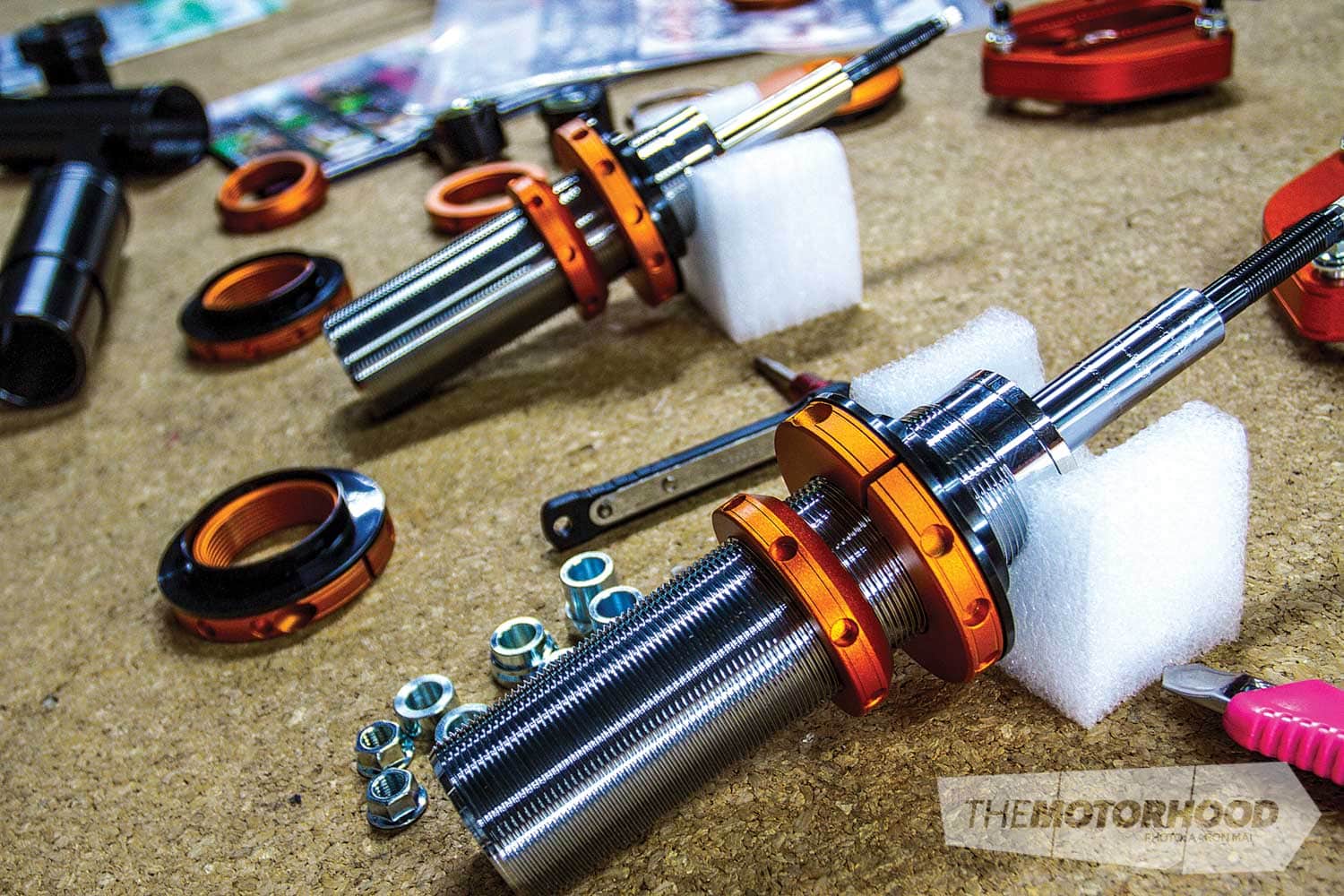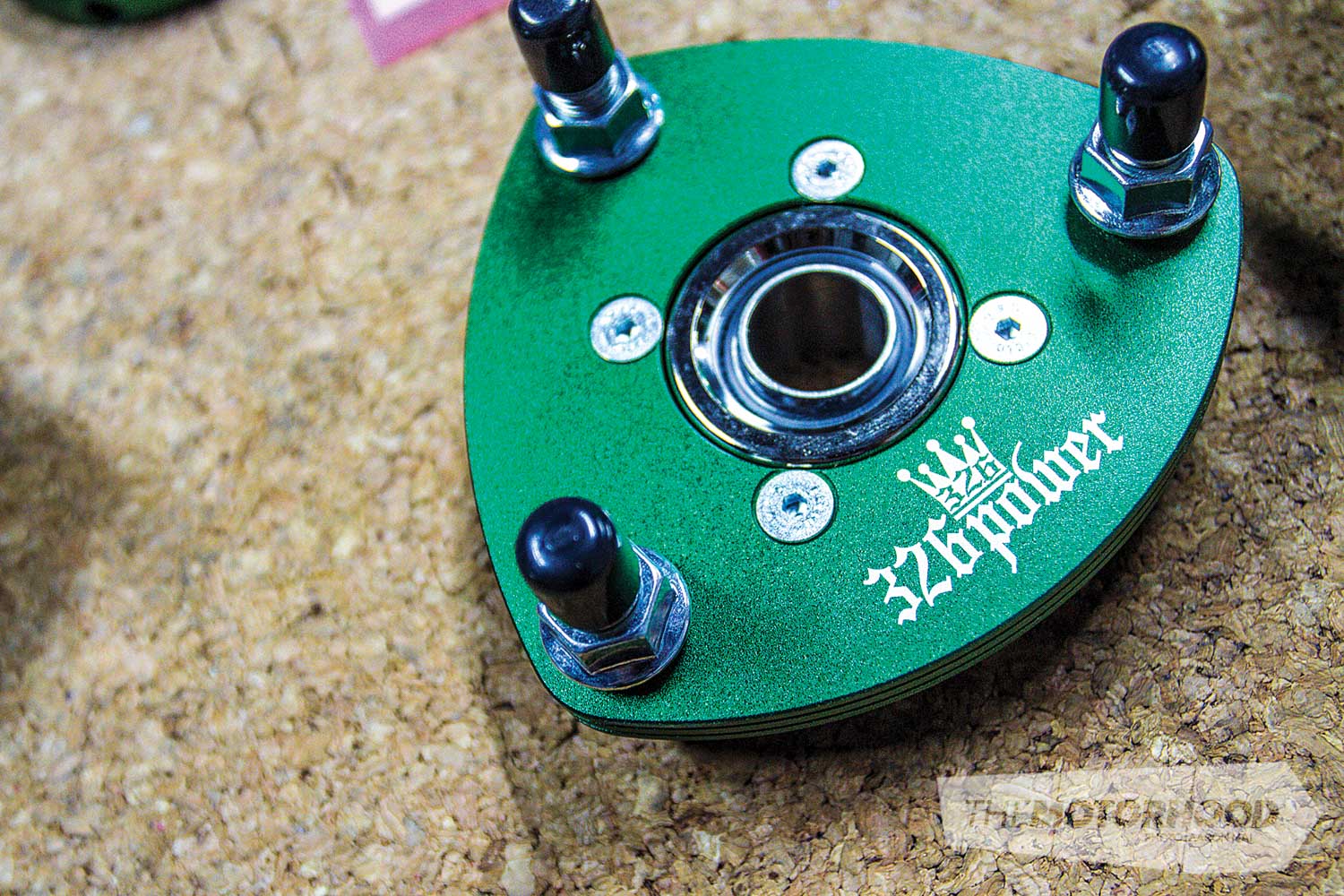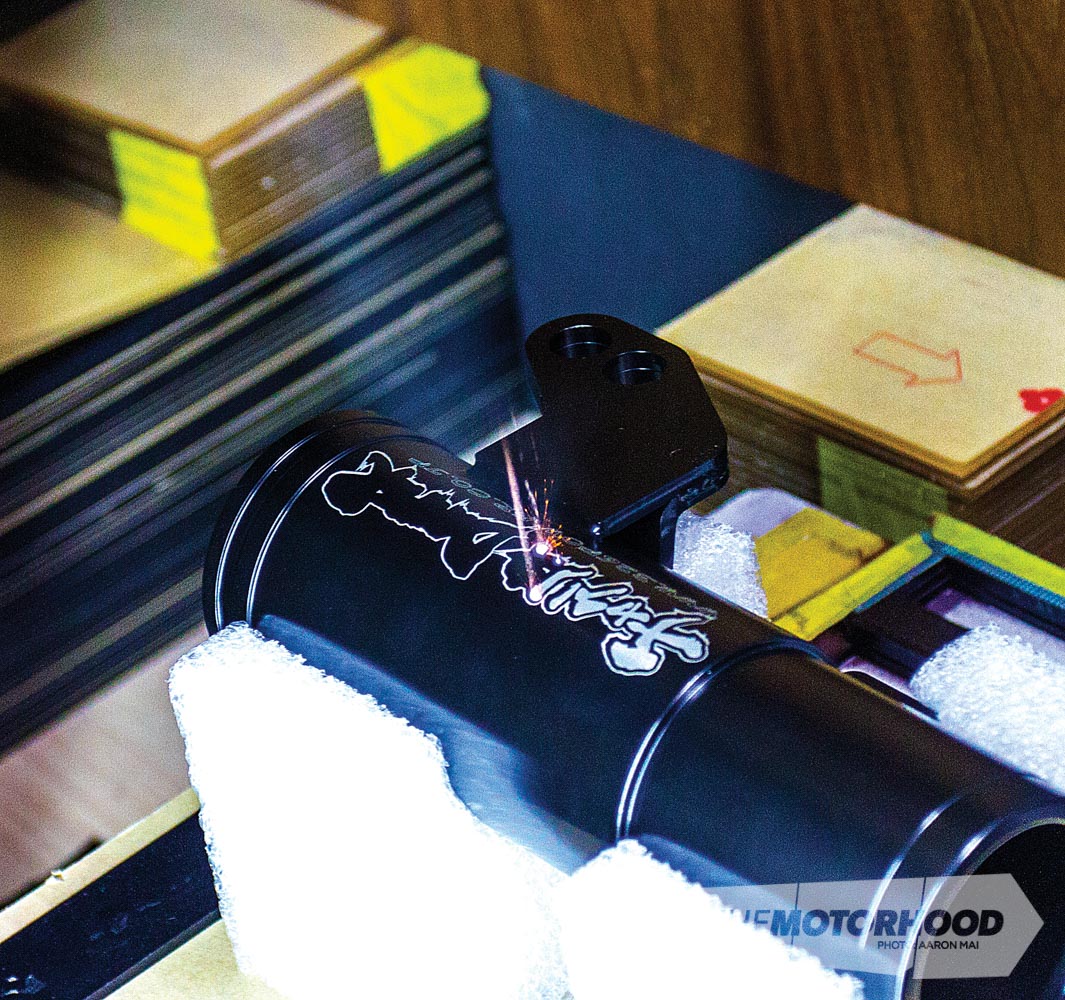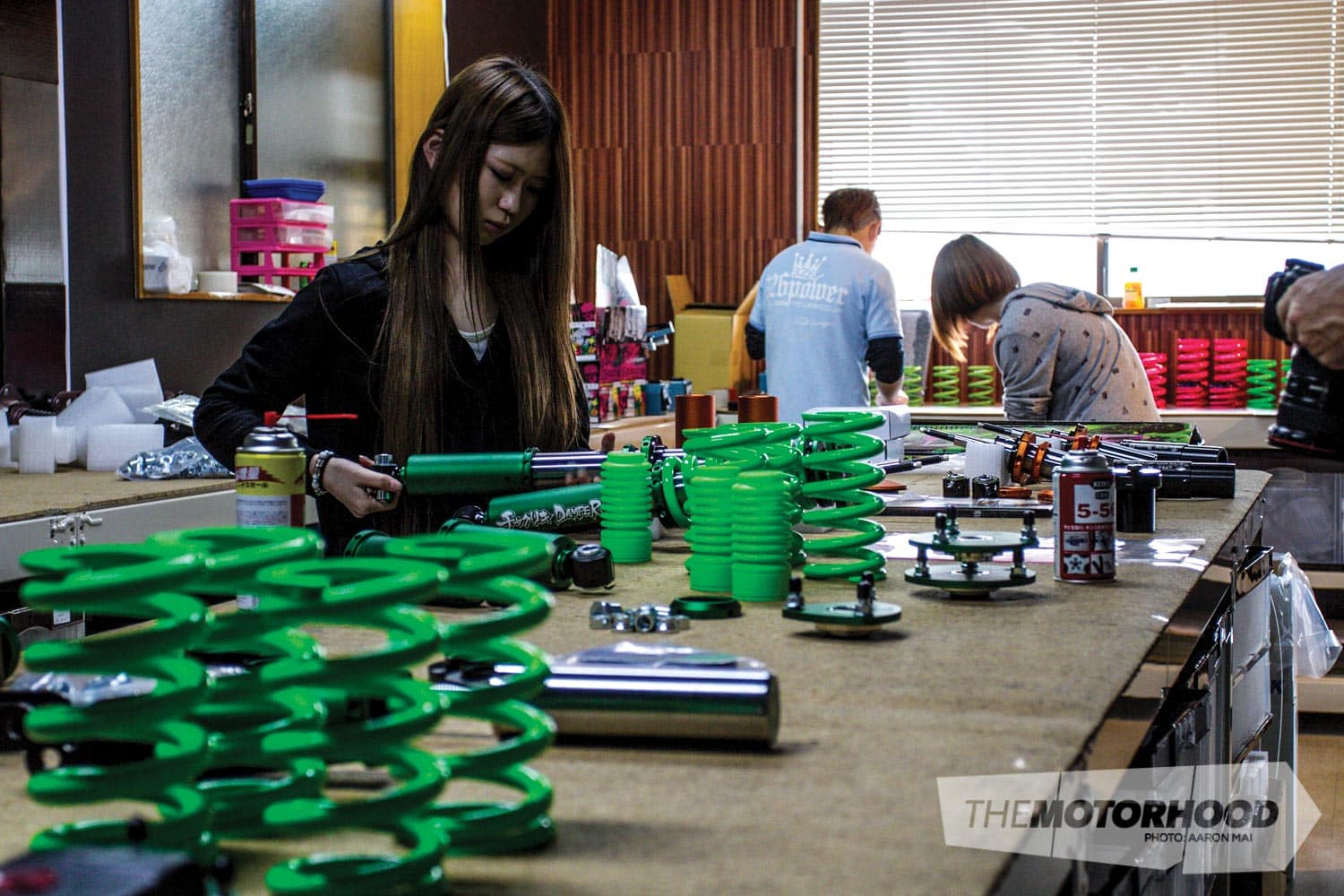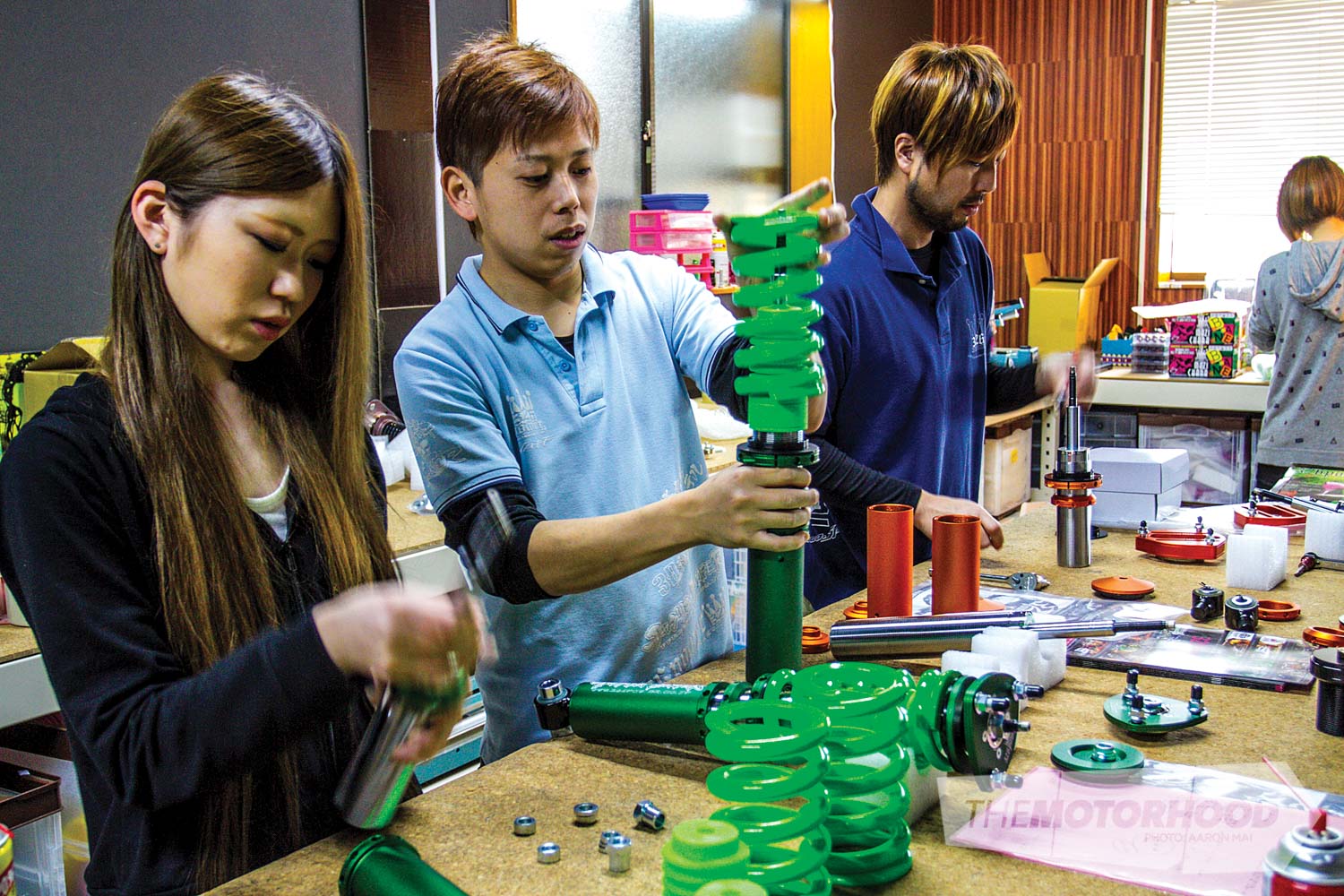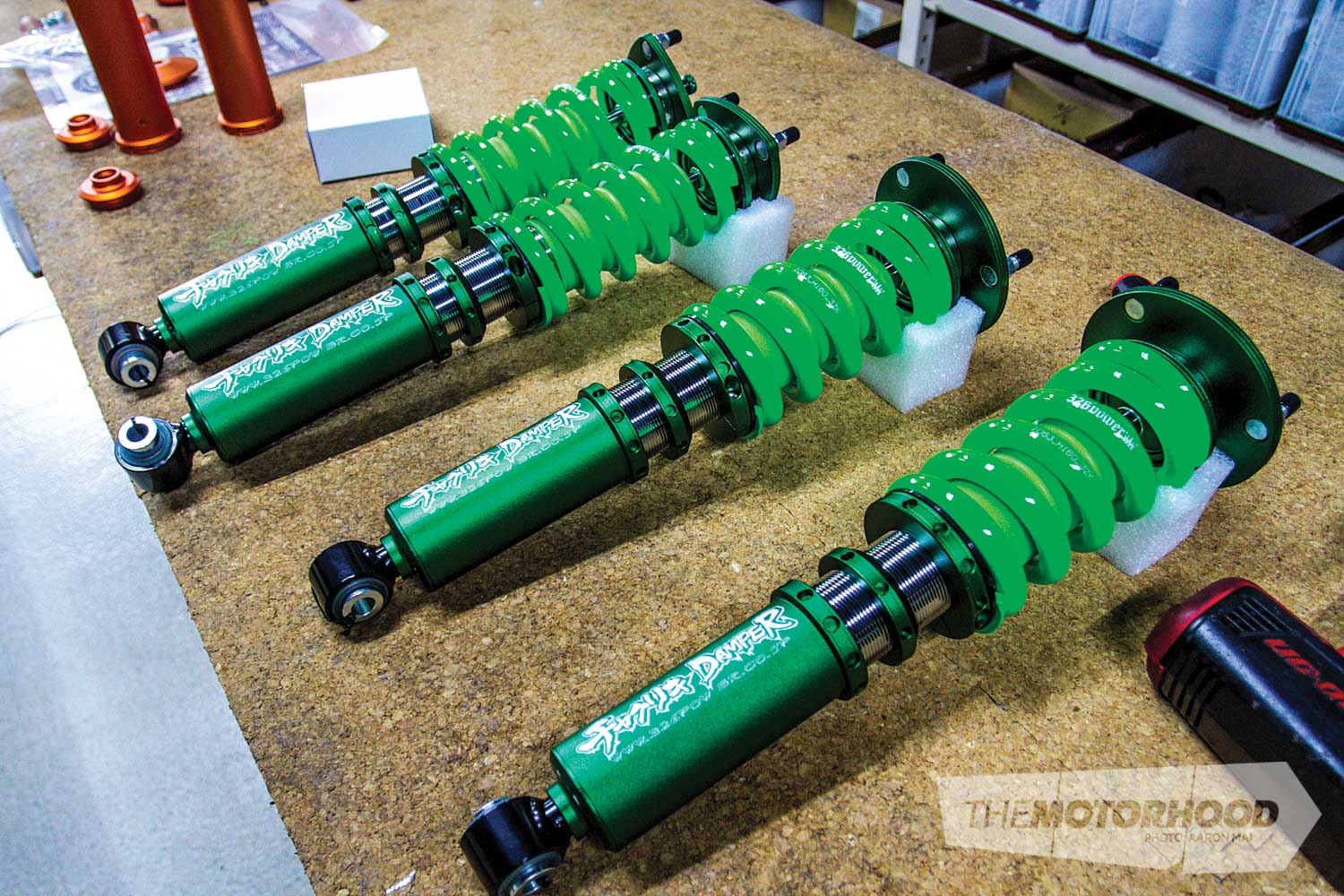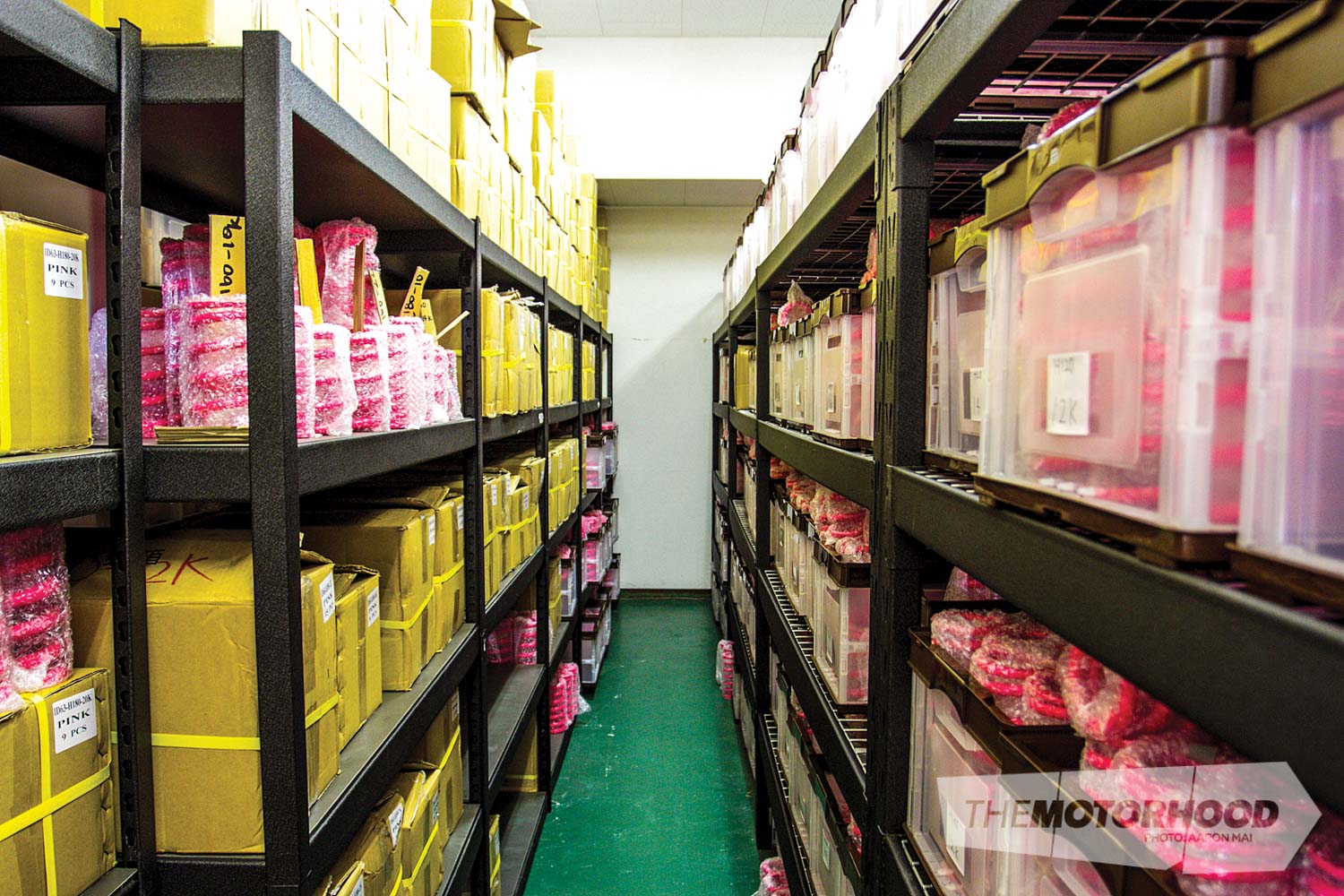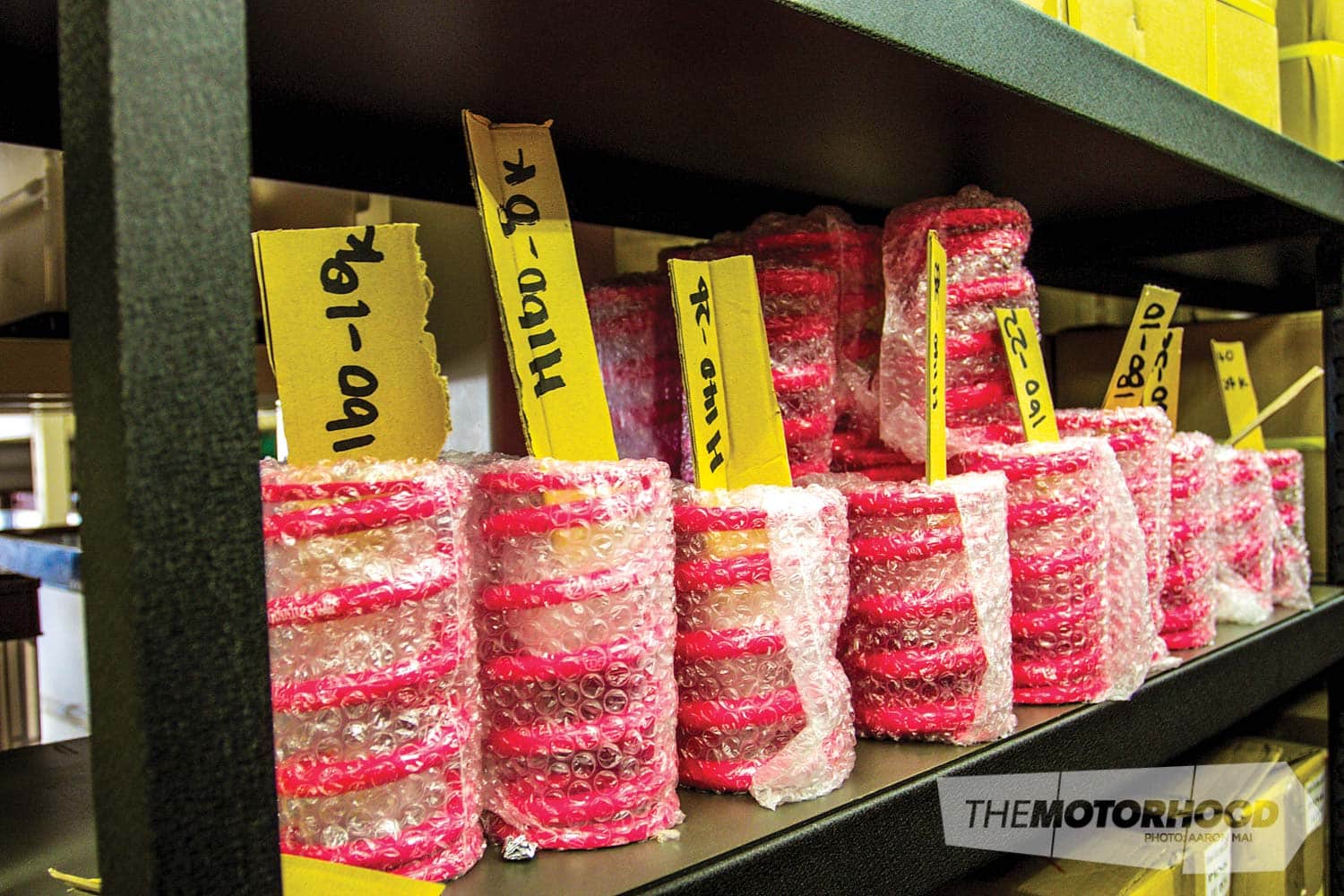data-animation-override>
“Going against the grain; Aaron goes behind the door of Hiroshima style king, 326Power.”
Artists continually endeavour to make a statement — for many, lukewarm creations and ‘fitting in’ mean certain death. For Mitsuru Haraguchi, sticking to his guns — and constantly striving to create his own vision of what a car should be — has not only earned him a reputation but also praise as one of Japan’s most colourful automotive creators, and one with a vision unlike any other.
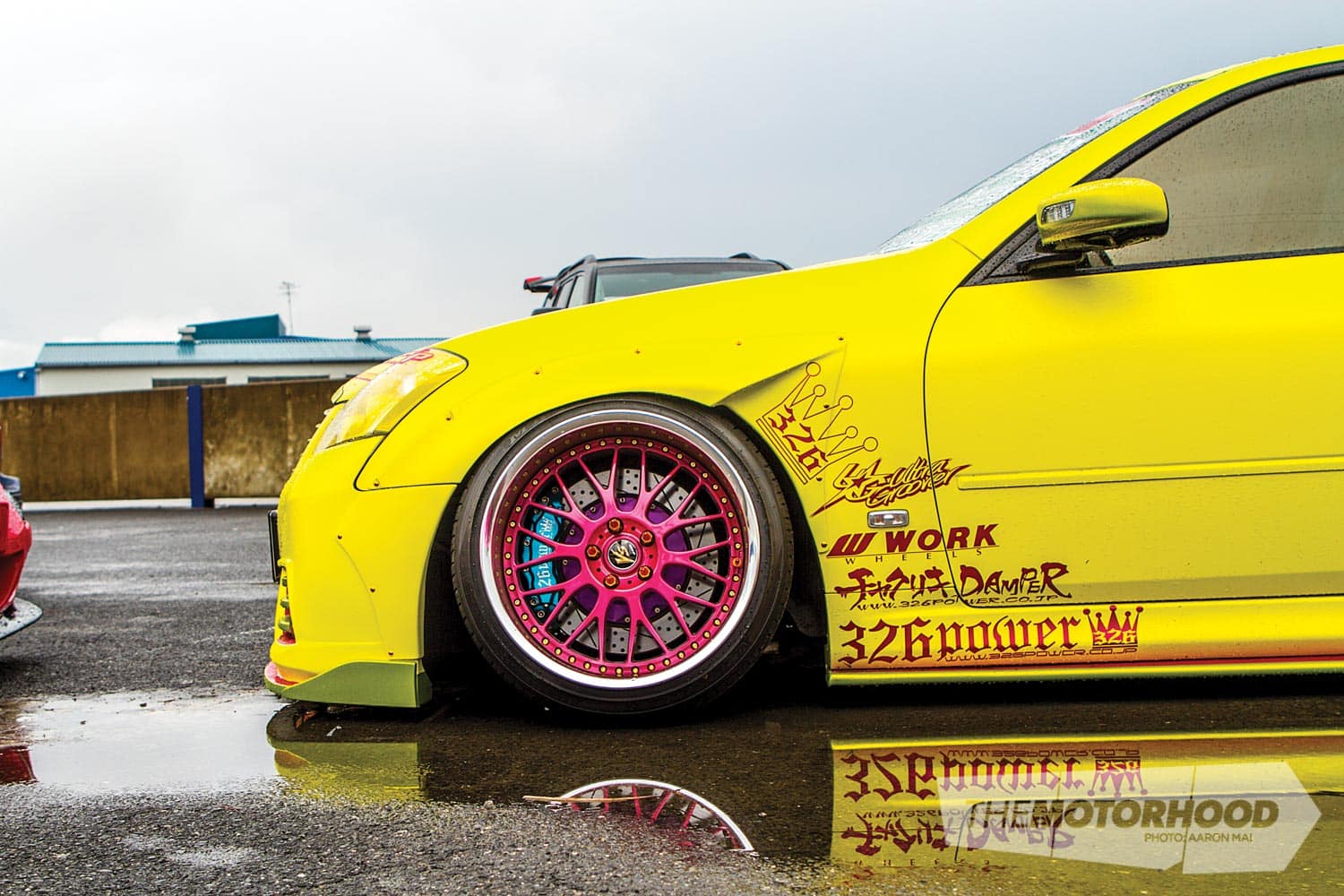
Haraguchi-san is no stranger to the tuning world, and while many of you may not be overly familiar with his name, you will certainly recognize the brand: 326Power. Responsible for taking the VIP scene and giving it a good shake-up, Haraguchi-san is also no stranger to style; in fact, it seems he was born with style flowing through his veins. Growing up in Hiroshima, he started out in drifting circles, running the back roads before moving into competition-level events. He is one of the few to have won events in both D1 Grand Prix (D1GP) and Formula Drift and is considered by many to be one of the OG drifters.
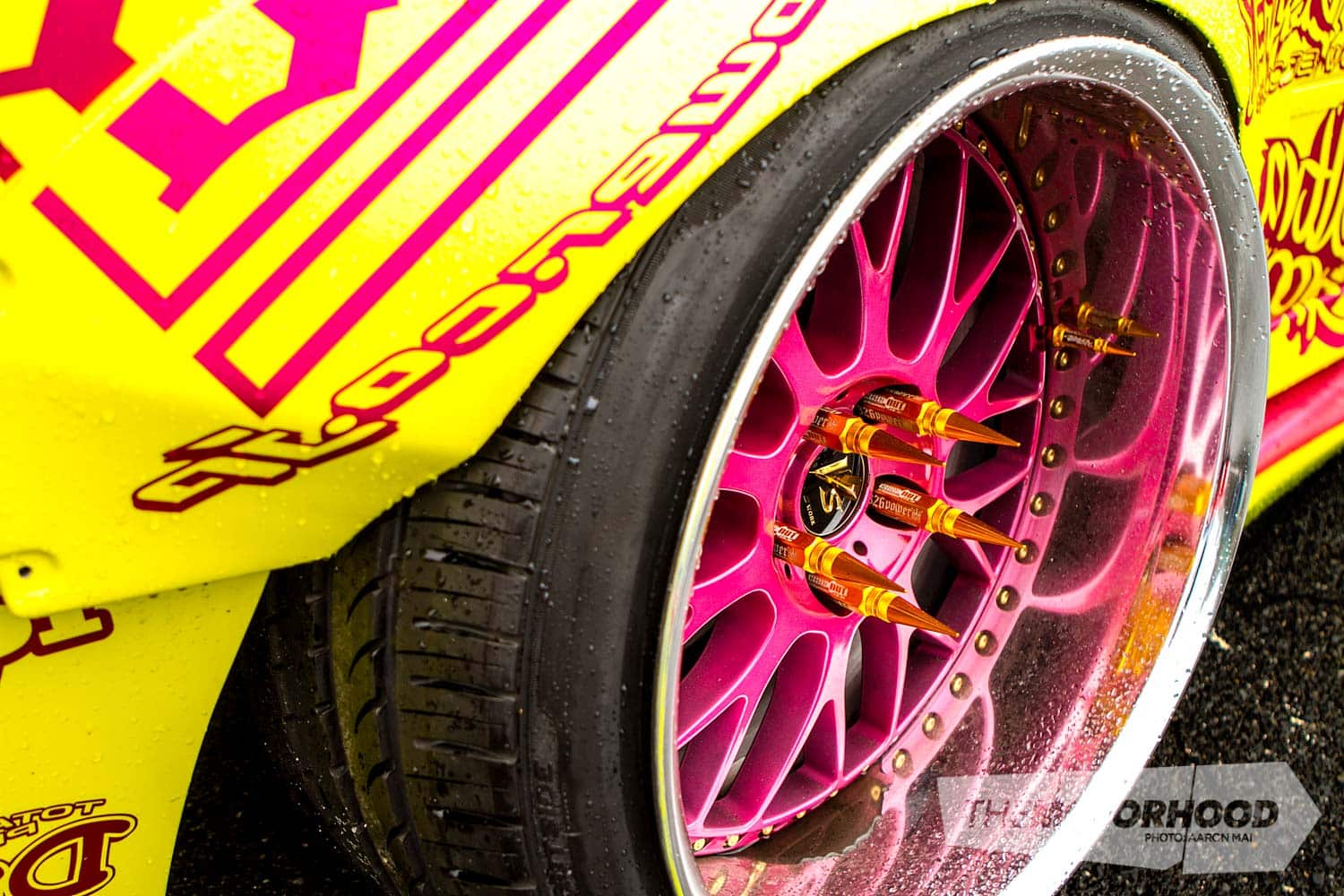
Most will remember him not only for his competition success but also for one particular yellow FC3S RX-7 that turned up in D1GP at a time when many of the cars lacked any real style or character. Haraguchi-san has always had one simple philosophy: never compromise on looks — something clearly illustrated by his BN Sports–equipped FC D1GP machine. Easily one of the mostaggressive drift cars of all time, it now holds legendary status, and reflects the character of Haraguchi-san down to a tee. The FC is basically Haraguchi in automotive form — it’s wild, untamed, and doesn’t really care about anyone else’s opinion.
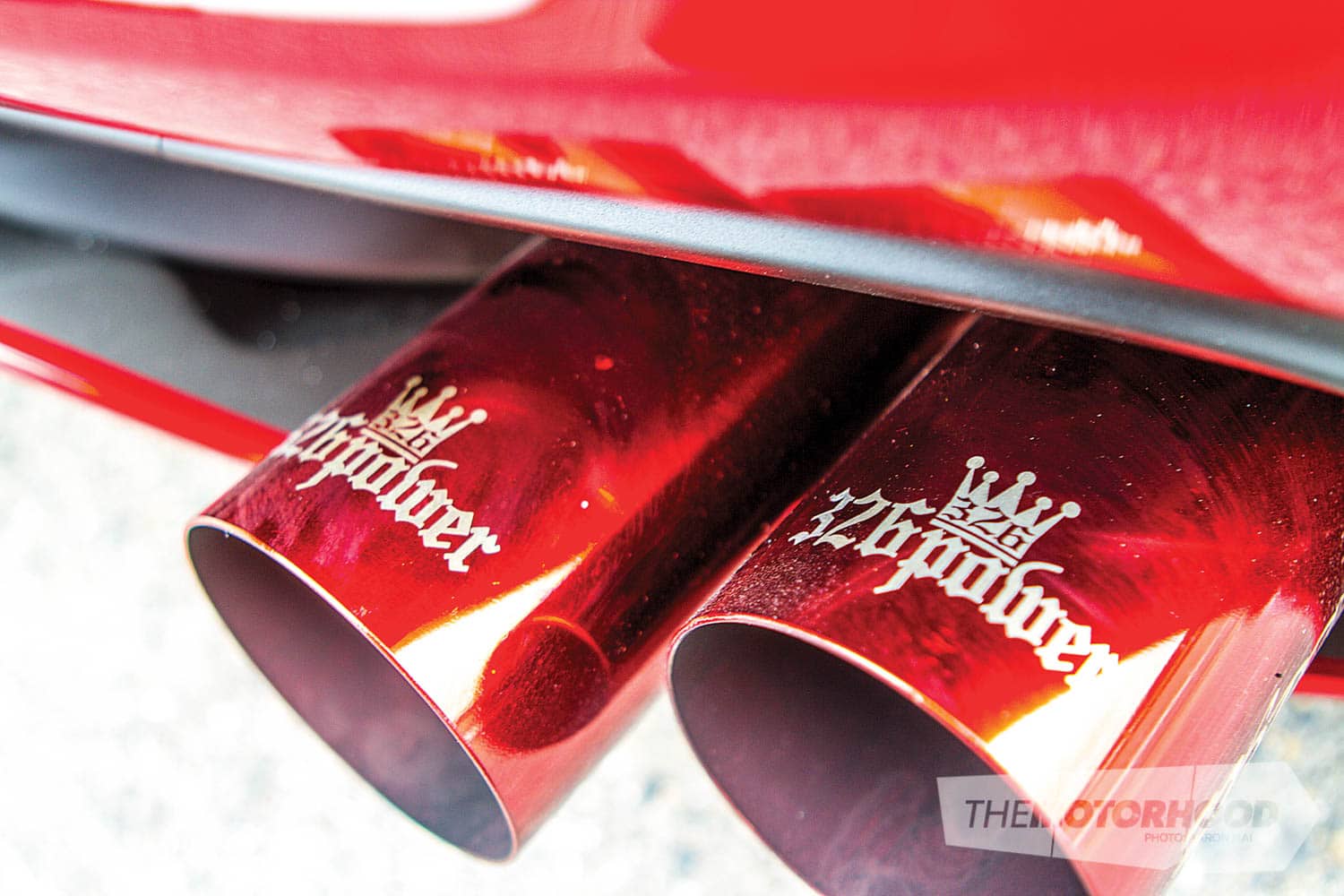
His build principle of creating useable yet aesthetically wild creations seems reflective of the Hiroshima scene as well. Hiroshima has been pumping out incredible automotive culture for decades, and at the forefront of that has been the shakotan movement. The most impressive thing is that, in that neck of the woods, shakotan has never really died off — it has merely spawned a modern twist that has been continued by many of the current tuners. When Haraguchi-san founded 326Power, it was merely a group of friends tinkering with cars, and, on deciding to hang up his helmet, he went on to expand the name and create wild aftermarket tuning parts with that distinctive Hiroshima twist.

Given such an original style, visiting 326Power has been on my bucket list for a long time. Well, finally, after three years of unfortunate timing, the stars aligned, and I was able to get a close-up look at some of his creations and meet the man himself.

As I arrived at the 326Power compound, the first sight that greeted me was the VIP shakotan Lexus RC-F show car that caused a huge stir at the 2015 Tokyo Auto Salon. It’s not the sort of car one would expect to find sitting around outside in the car park, but, on closer inspection, it quickly became obvious that this RC-F was no show pony; rather, it was Haraguchi’s daily, the car he uses to get to and from work. Sitting virtually flat to the ground, the RC-F was a sight for sore eyes. We weren’t in central Tokyo, where the roads are as smooth as glass, and yet my NZPC business card didn’t make it far between the tyre and fender. It wasn’t until I peered underneath that I found it has no airbags, just totally static coilover suspension all the way round. Haraguchi-san laughed at my astonishment, and, as he came up to shake my hand, he said, “You won’t find bags in this workshop.” The long straggly hair and the unshaven face with its scary yet welcoming smile showing through although he was chewing gum, are certainly a trademark of his. Yet, anyone who knows Japanese tuning is well aware that this man is top-shelf, and even the big-name drivers of today will instinctively bow when they even mention the name ‘Mitsuru Haraguchi’.
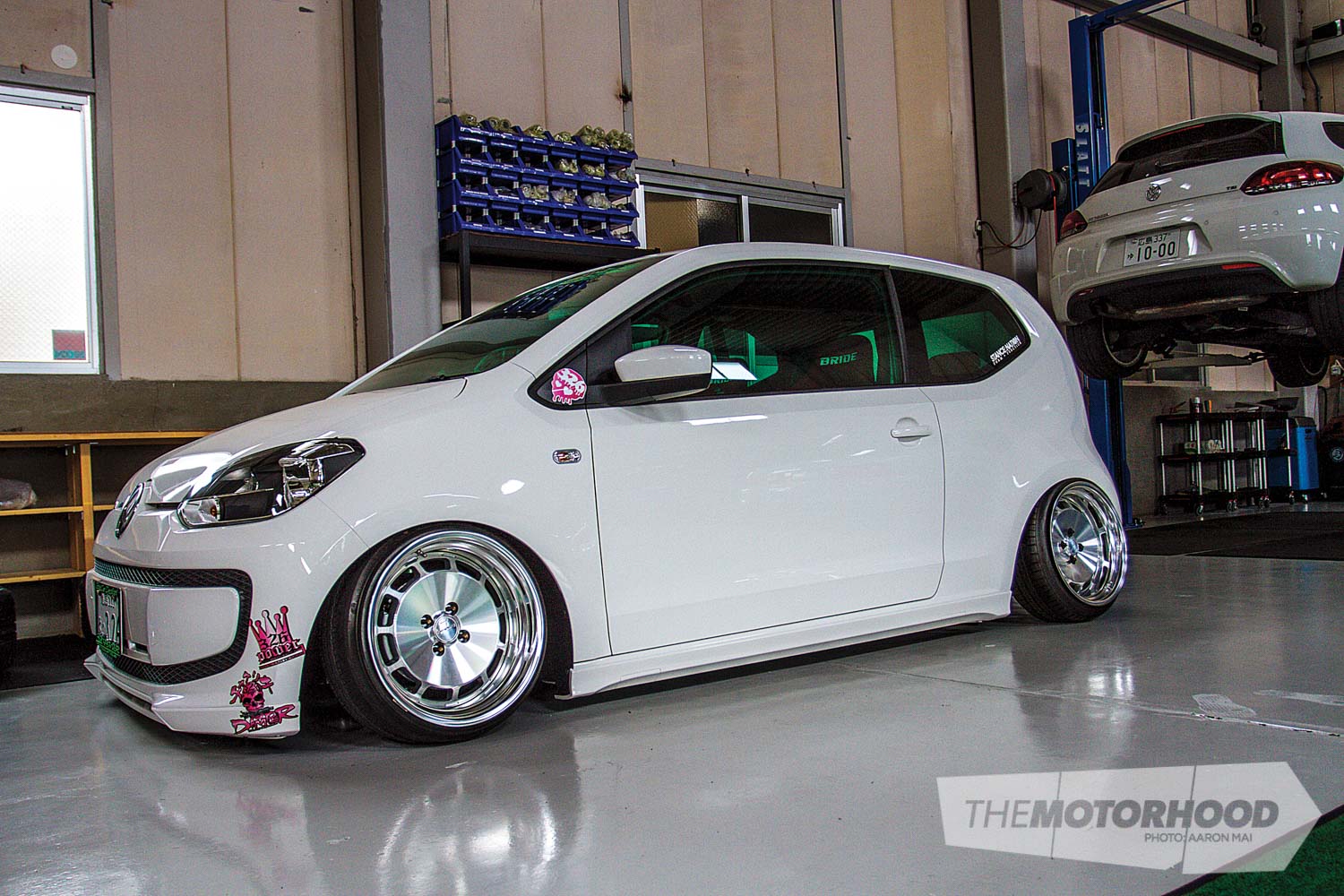
As I was visiting early on a Saturday morning, not all the cars were around, but, as he opened up the workshop roller door, a few more creations were revealed. A Toyota Celsior from Club Liberty VIP sat pretty on Work Meister M1 three-piece wheels, and I spotted the 326 Fairlady Z and a VW with custom bodywork to flush-fit its oni-camber wheels. One thing every single car had in common with all the others was that its belly sat mere millimetres off the ground. The range of Chakuriki Dampers (coilovers) has been designed by Haraguchi for a range of cars from the Lexus LS, GS, IS, and SC models, to Fairlady, Infiniti G35, S13, S14, and S15s. Of course, the Euros aren’t left out, with Audi, BMW, VW, and Mini all catered for, and, for those concerned about emissions, no worries: you can even slam your Prius. Haraguchi-san truly has perfected the art of slammed sleds on static suspension that remain truly drivable. “Anyone can lower a car, but there is no room for error when you have the chassis slung so low to the ground,” he said as he opened a door on the side of the workshop and gestured for me to follow. As we walked up a dimly lit corridor, he opened another door, and shelves and parts boxes became visible under the bright light.
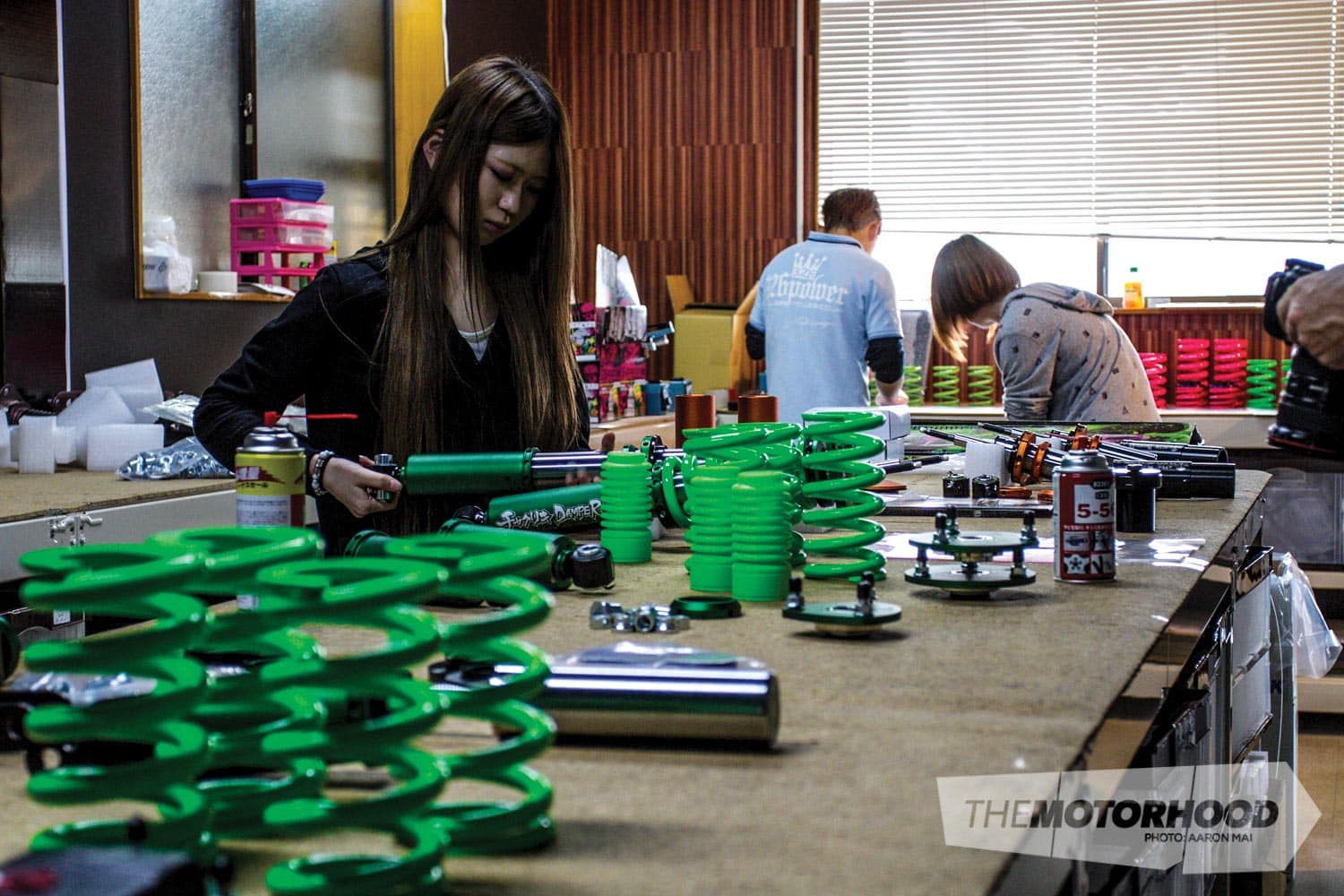
It’s not too often that companies take you behind the curtain with a camera and let you run free. I was now in the assembly line, the heart of 326Power, which consists of a very few sets of hands and one large workshop bench. Although it is an international company, 326Power is driven by the same small, tightly knit group of friends who have been together since those early days.
The small assembly room was flat out. Off to one side, a laseretching machine was branding suspension components due for assembly, and some of the team members worked on boxing up previous orders while others were assembling new ones.
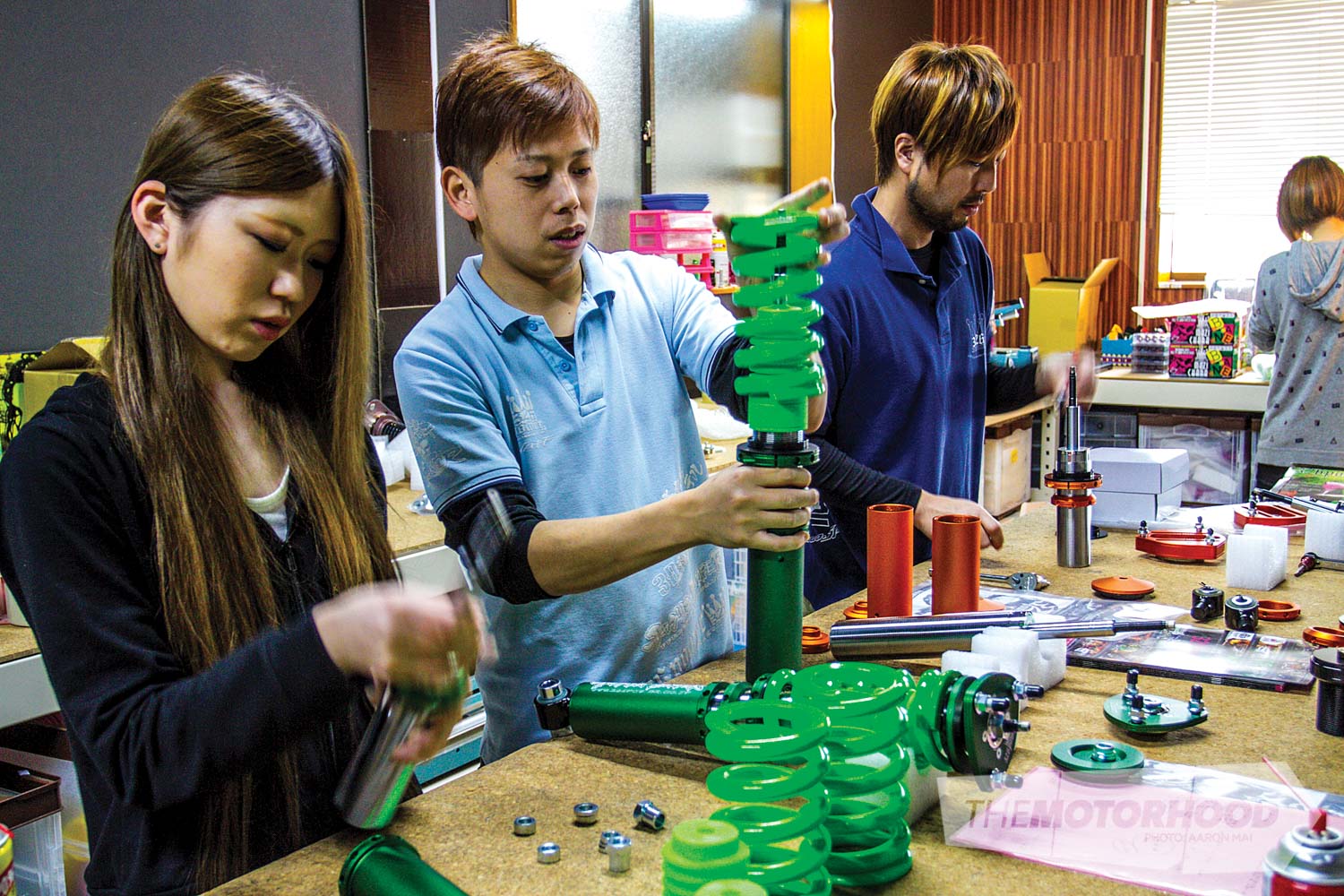
While Haraguchi-san was assembling a custom order of dampers, I noticed a few things that made them different to other dampers. First, the 326Power springs are much less tightly wound, yet they are thicker, to give a more linear rate while maintaining stiffness. The cars that they are designed to carry aren’t exactly on the slim side, so it makes sense. Another thing is that the suspension is designed to work with as much or as little camber as you like. Usually, dampers have issues with the lower mount slots, as the bolt doesn’t want to grab well and slips under hard driving conditions; however, Haraguchi-san has found the perfect workaround by using a square washer. A hole is drilled in the side of the washer, and you can rotate it to move the bolt further inwards. The washer locks in place via tabs that are welded to the lower mount, ensuring there is zero chance of slip. Once fitted, the suspension behaves like you would expect. You can ride super low without sacrificing the performance of the damper, and, while cornering, you can feel the weight shift and the car ‘plant’, which is important when sliding, as Haraguchi explained. “There is no reason for a car to ride horribly just because it is super low,” he said, laughing, while putting a completed damper carefully into its box.
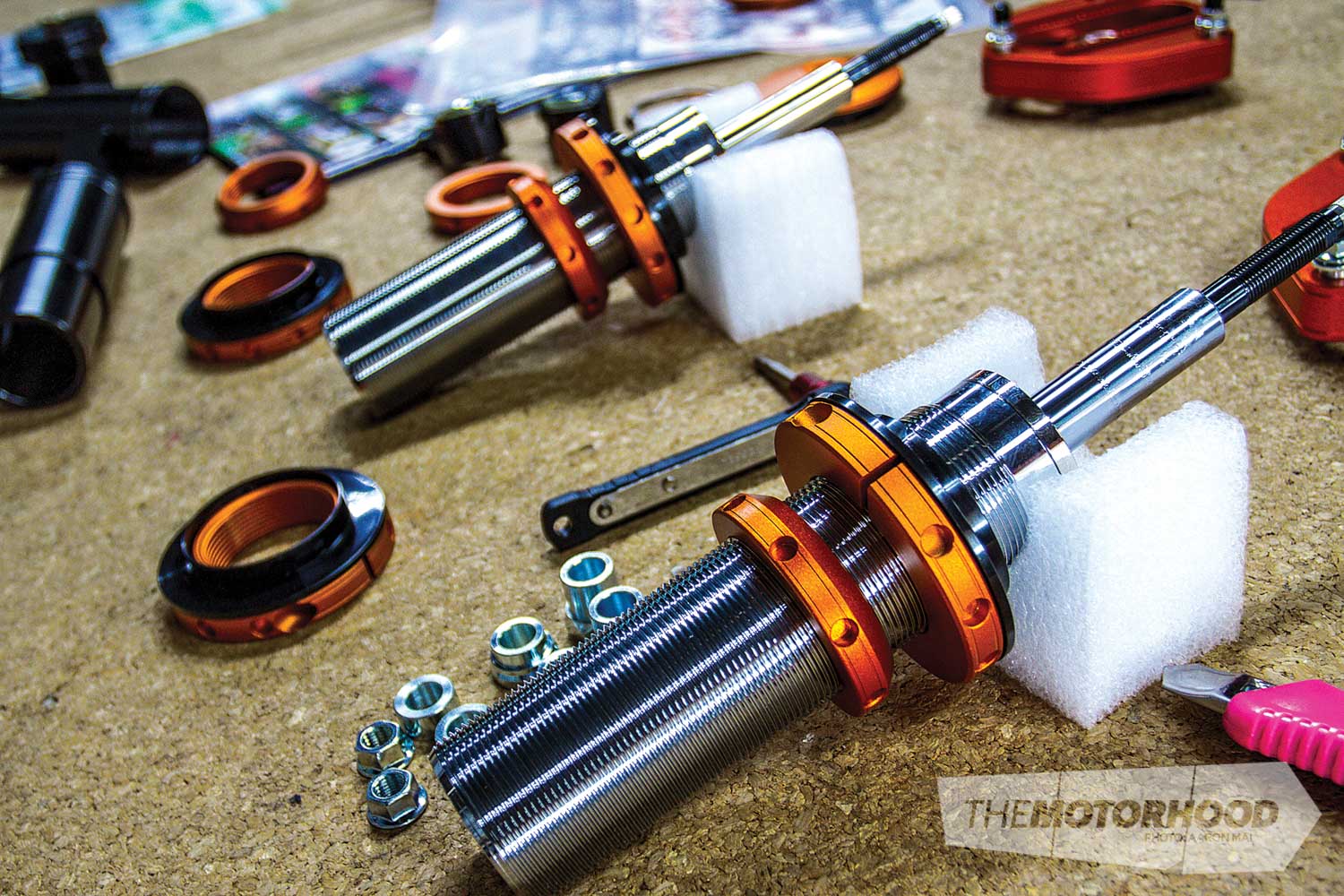
Looking around, I could see the additional custom parts on offer fitted very well with the build theme of all his cars, with long bullet wheel nuts and custom brake calipers, all in super bright, loud colours. “If you are going to create something, you may as well stand out from the crowd and make yourself noticed,” he said while watching another box of suspension get taped up ready to ship.
You can tell Haraguchi-san has taken the path less travelled and has handcrafted his personality like his cars, which are based on the things that make him tick.
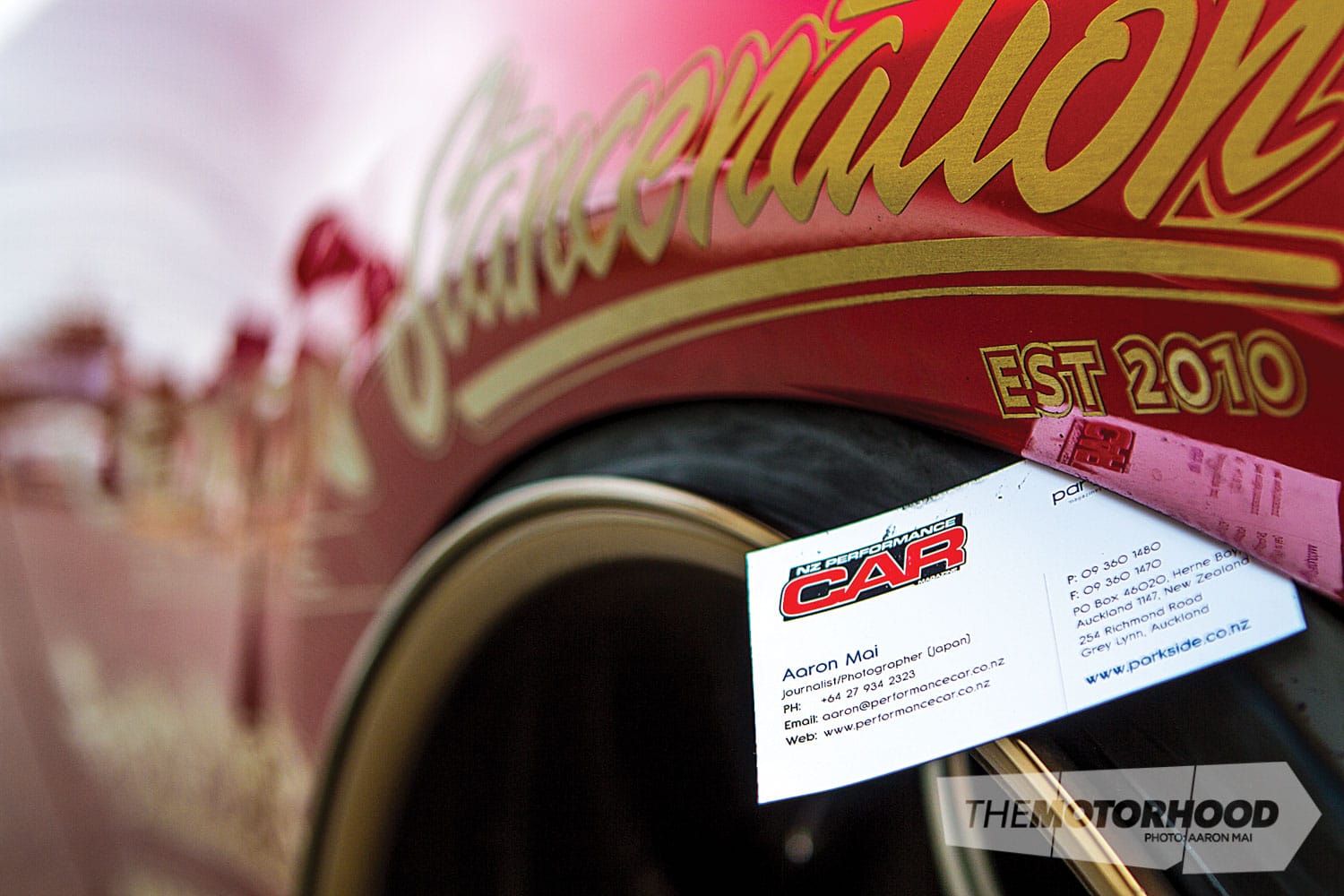
His dark, mysterious eyes don’t see things as they are but, rather, exactly as he wants them to be. “I believe that when it comes down to it, our cars are an extension of us,” he explained, and though his staunch, cambered, and attention-demanding creations are not everyone’s cup of tea, he has achieved his goals perfectly. He has done what every good artist should — divide opinion, run with the outlaws, and take risks in creating his art: in this case, a modern style of VIP shakotan unlike any other. “There is no reason for a car to ride horribly just because it is super low,” he said, laughing, while putting a completed damper carefully into its box





